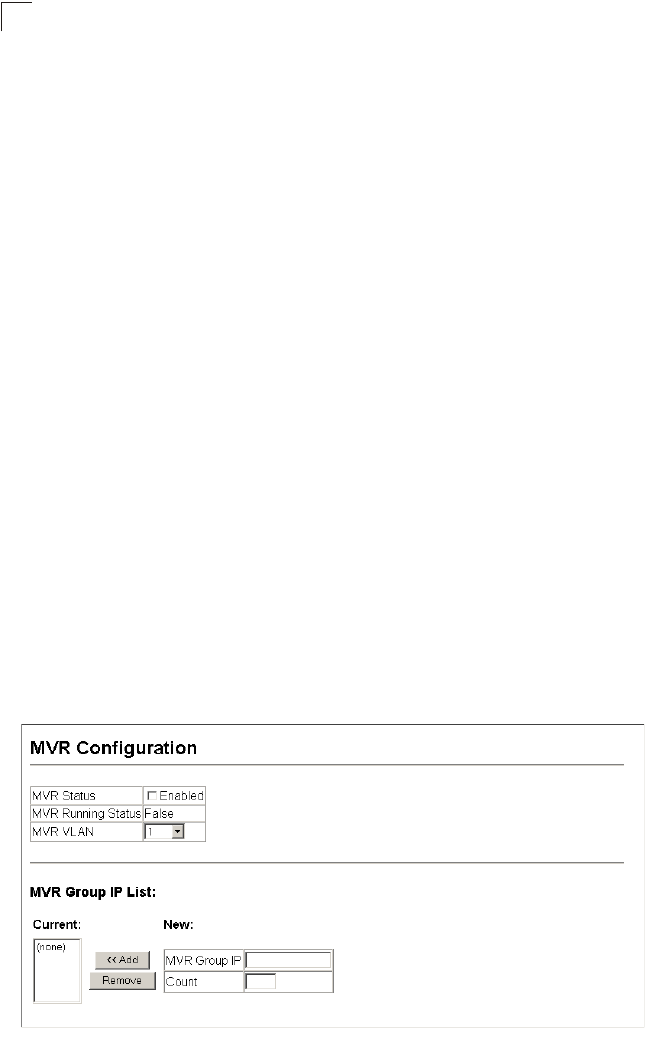
Configuring the Switch
3-184
3
4. For multicast streams that will run for a long term and be associated with a
stable set of hosts, you can statically bind the multicast group to the
participating interfaces (see “Assigning Static Multicast Groups to Interfaces” on
page 3-188).
Configuring Global MVR Settings
The global settings for Multicast VLAN Registration (MVR) include enabling or
disabling MVR for the switch, selecting the VLAN that will serve as the sole channel
for common multicast streams supported by the service provider, and assigning the
multicast group address for each of these services to the MVR VLAN.
Command Attributes
• MVR Status – When MVR is enabled on both the switch, any multicast data
associated an MVR group is sent from all designated source ports, and to all
receiver ports that have registered to receive data from that multicast group.
(Default: Disabled)
• MVR Running Status – Indicates whether or not all necessary conditions in the
MVR environment are satisfied.
• MVR VLAN – Identifier of the VLAN that serves as the channel for streaming
multicast services using MVR. (Range: 1-4094; Default: 1)
• MVR Group IP – IP address for an MVR multicast group. The IP address range of
224.0.0.0 to 239.255.255.255 is used for multicast streams. MVR group addresses
cannot fall within the reserved IP multicast address range of 224.0.0.x. (Range:
224.0.1.0 - 239.255.255.255; Default: no groups are assigned to the MVR VLAN)
• Count – The number of contiguous MVR group addresses. (Range: 1-255;
Default: 0)
Web – Click MVR, Configuration. Enable MVR globally on the switch, select the
MVR VLAN, add the multicast groups that will stream traffic to attached hosts, and
then click Apply.
Figure 3-107 MVR Global Configuration


















